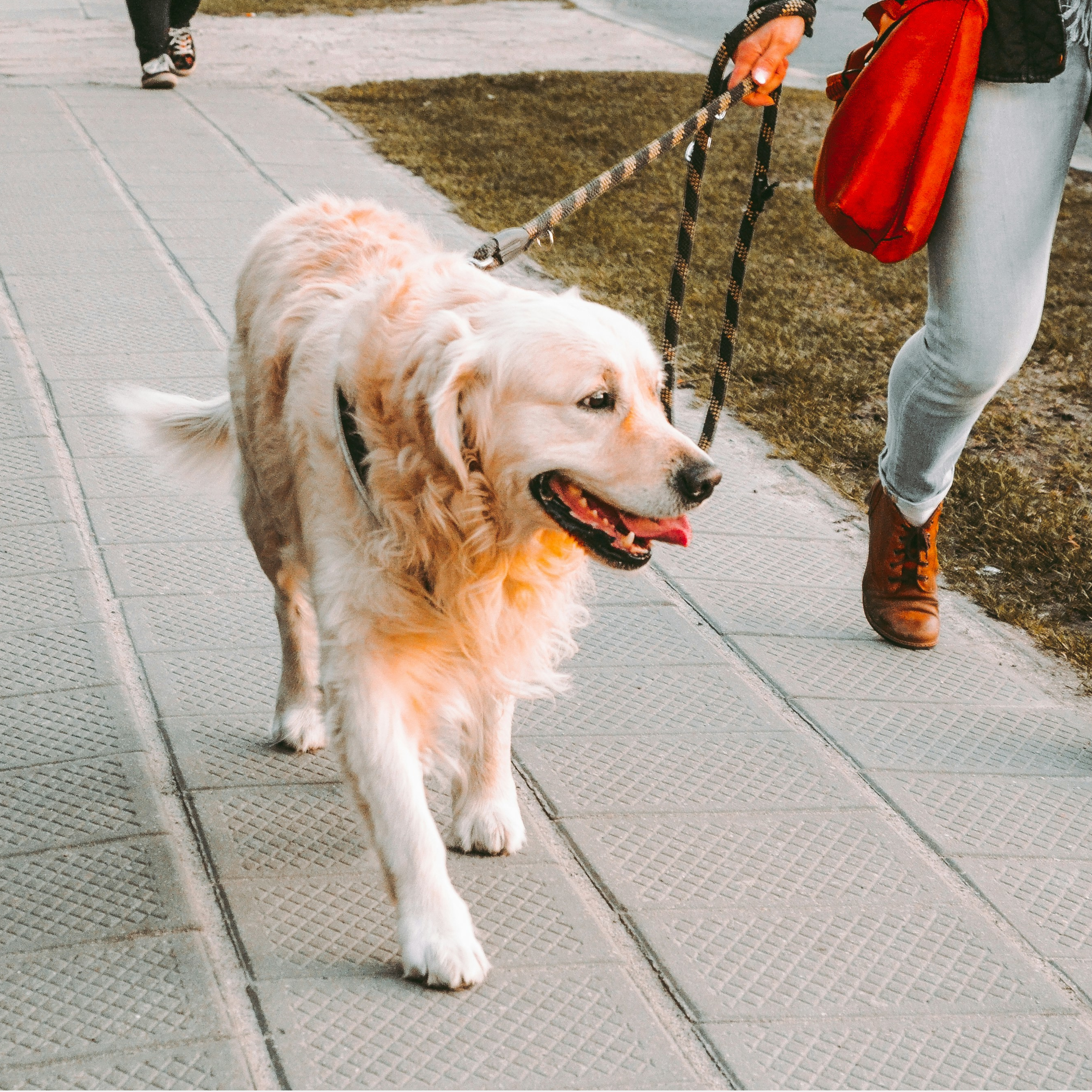Why Do Dogs Pull On Walks & What Can I Do About It?

Walking your dog can be one of life's simple joys, a chance to connect with nature, get some exercise, and bond with our furry companions. However, for many dog owners, the tranquil image of strolling down the street with a content canine by their side can quickly turn into a frustrating tug-of-war battle. Why do dogs pull on their leash during walks and what can we do about it? This seemingly simple question belies a complex interplay of instinct, behavior, and training.
Understanding why dogs pull on their leash requires a deeper look into their evolutionary history and the dynamics of their behavior:
Instinctual Behavior:
Dogs are descendants of wolves, animals that rely heavily on teamwork and cooperation for hunting and survival. When a dog pulls on the leash, it may be tapping into its innate drive to explore and investigate its surroundings.
Lack of Training & Poorly Designed Tools:
A leash or harness that encourages a dog to pull or is not comfortable for the human will reward your dog which will result in continued pulling. If a dog learns that pulling on the leash results in getting to where they want to go faster or reaching something desirable, such as a favorite park or a fellow canine friend, it will likely continue to exhibit this behavior. We avoid retractable leashes because retractable leashes are under constant tension resulting in your dog relating tension (pulling) with rewards.
Also, if the leash is not designed to be comfortable for the human then the human will struggle maintaining control resulting in a lot of time with little results.
Environmental Stimuli:
Dogs are highly sensory creatures, and the sights, sounds, and smells of the outdoors can be incredibly stimulating. A passing squirrel, the scent of another dog, or the rustle of leaves can trigger a dog's instinctual response to investigate or give chase, leading to pulling behavior.
So, what can be done to address leash pulling behavior? Fortunately, there are several strategies that dog owners can employ to encourage their furry companions to walk politely on a leash:
Use Equipment Engineered For Your Challenge: Choosing the right leash and harness or collar can make a significant difference in managing leash pulling. We love the Forever Leash and Forever Slip. We place the Forever Slip high behind the dog’s ears to prevent harmful choking. Behind the ears is a sensitive place where lower on the neck, near the shoulders, is a much stronger area and encourages pulling. (Think pulling a sled.) We follow this simple procedure and it works with dogs of all sizes.
- Start your walk holding both handles
- When the second handle starts to get tight
- Stop and walk backwards until your dog looks at you
- Wait 3 seconds ensuring your dog is focused on you
- Start walking again
- Repeat. At first, you may be walking more backwards than forward. 😁
Your dog will start to correlate the loose leash with walking which is what they want to do. When your dog starts to feel the Forever Leash get tight (your hand is holding that second handle) they will slow down and glance at you. It may sound unlikely, but just like a dog relates hearing your keys to a car ride or the crinkle of their treat bag to a treat they will relate walking with a loose leash. They are smart animals!
There are some helpful videos that show this method in action located on the Carmella & Rose’s website. https://www.carmellaandrose.com/pages/the-forever-leash-details
Training: Rewarding desired behaviors, such as walking calmly by the owner's side, can be highly effective in teaching dogs leash manners. Treats, praise, and toys can all serve as incentives for good behavior.
Consistency and Patience: Changing a dog's behavior takes time and consistency. By setting clear expectations and reinforcing them consistently during walks, owners can help their dogs learn appropriate leash manners. In the beginning walks can be very frustrating so plan short walks so that you and your dog stay in good spirits.
Engaging in Mental and Physical Exercise: A tired dog is less likely to pull on the leash out of excess energy or excitement. Providing ample opportunities for both physical exercise, such as running or playing fetch, and mental stimulation, like training sessions or puzzle toys, can help alleviate leash pulling behavior. We like to do this prior to going on the walk. For working dogs, we love treat balls, slow lickers, or any kind of puzzle causing mental stimulation. Mental stimulation will reduce your dog’s energy more than physical exercise which will make for a more peaceful walk. Feel free to check out our favorite toys for tiring your pup out.
In conclusion, leash pulling is a common behavior exhibited by dogs during walks, driven by a combination of instinct, environmental stimuli, training, and physical factors. By understanding the underlying reasons for this behavior exercising the techniques above, dog owners can help their furry friends become more enjoyable walking companions. So, the next time you find yourself in a tug-of-war with your dog during a walk, remember patience, consistency, and positive reinforcement are key to fostering better leash manners and strengthening the bond between you and your canine companion.


